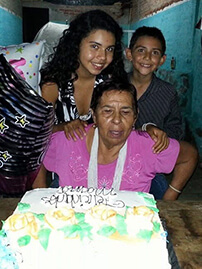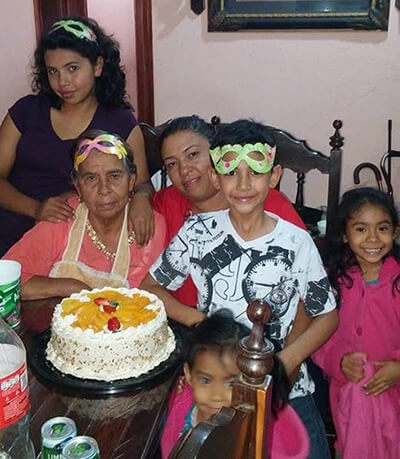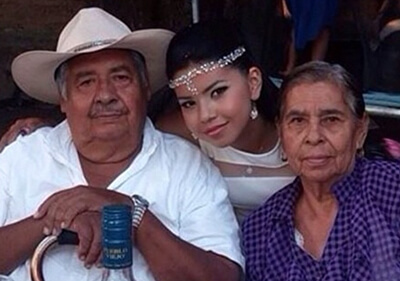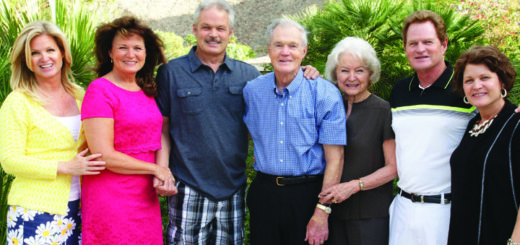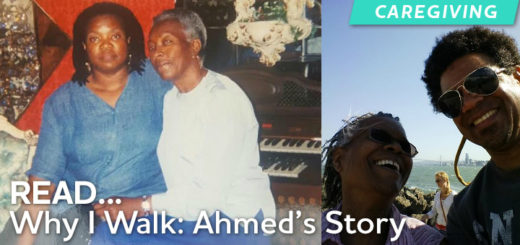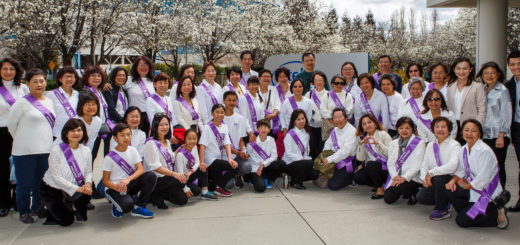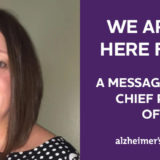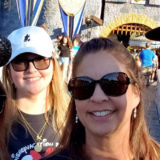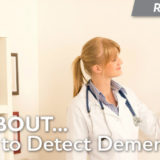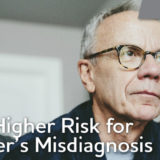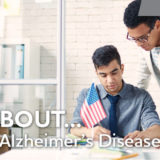It’s not normal aging: Hispanic granddaughter cares for Abuela with dementia
Nazly Zoar Cobian was raised by her grandmother Rosa Torres. When Rosa’s behavior changed, Nazly was the first to raise concerns. Unfortunately, a doctor dismissed it as the normal signs of aging. Eventually, Rosa was diagnosed with dementia. Nazly and her mother, Maria Torres, found themselves tackling a disease they knew nothing about. With the help of the internet, Nazly found the Alzheimer’s Association’s website, learned about dementia and how to give her grandmother the best care possible.
Humble beginnings
Rosa Torres grew up with a large family in a rural village outside of Mexico City, Mexico. She married a man who had come to her village to find work and together they had several children and built their home there. Rosa’s husband made enough money to buy land and start their own farm. Once settled, the couple began traveling all over Mexico and the United States.
Despite humble beginnings, if you met her later in life, you would never have known. She prided herself in always being well dressed, with beautiful long hair that she took great care of. Family was incredibly important to her, and she showed that by giving them gifts and making sure they were well fed.
“She gave the best presents and would sneak $5 in your bag,” said Nazly Cobian, one of Rosa’s granddaughters. “She’d call you at midnight on your birthday, sing, and hang up. If you told her your birthday, you were getting a call that year. She wanted to know what was going on [with her family] and take care of [us]. I loved that about her.”
Noticing the signs
Nazly lived with her grandmother from age six to 13 before moving with her mother, Maria Torres, to the United States. When Nazly was 16, Maria decided Nazly’s education would be better served in Mexico and the family moved back. When they returned home, Nazly instantly recognized something wasn’t right with her grandmother.
“Grandma liked to talk a lot. She was the kind of lady to do her hair and makeup and clothing and then cook for everybody,” said Nazly. “She stopped doing those things and I thought, ‘That’s weird, she only does that when she’s not feeling well.’ My Mom was always working [and didn’t notice]. It wasn’t until I brought it up to my mom that she said, ‘Okay yeah, let’s see what’s going on.’”
This doesn’t seem like “normal” aging
When Maria took Rosa to the doctor, the doctor quickly dismissed the women, insisting that Rosa was just getting older and there was nothing to be done. Approximately 13% of Hispanics who are 65 or older have Alzheimer’s or another dementia and are 1.5 times more likely to have dementia than Whites. Additionally, almost 6 in 10 (57%) believe that a significant loss of memory or cognitive abilities is a normal part of aging.
“I felt awful,” shared Nazly. “I knew my grandmother; I grew up with her. I remember her routine I remember the things she would say and do. It was like a completely new person living in my house. Who is this person? This is not my grandma. Everyone [else] would say, ‘What are you talking about? That’s her.’ But I knew something was going on, I just didn’t know what.”
A death in the family
It wasn’t until a few years later when one of Rosa’s sons died in his 40s that Rosa’s dementia became obvious to everyone. Rosa went into a deep depression. She had stopped eating and was no longer taking her medication. At first the family assumed it was just grief from losing her son, but as a month passed and nothing changed, they brought her to a doctor.
“That’s when we got the diagnosis for dementia,” said Nazly. “By that time [the signs were] obvious, because she wasn’t speaking anymore.”
What is dementia?
Like so many families both in the United States and Mexico, Rosa was given a diagnosis and sent home with no explanation on what to do next. Maria and Nazly left the doctor’s office unsure of what a “dementia” diagnosis meant, having never really heard the word before. Nazly was only lightly aware of the disease as she had spent time volunteering at a church that housed older adults with health problems that were placed there when their families could no longer care for them.
Maria was Rosa’s only daughter and took it upon herself to care for her mother. “I knew [my grandma] had memory issues and I’d knew about the residents living [at the church],” said Nazly. “Once I told [my mom] about [the people from the church], I scared her. We got inspired to do the research. What can we do to enrich [my grandma’s] life?”
Searching the internet for more answers, Nazly, who was more comfortable doing her research in English instead of Spanish, was able to find more information than her mother. Where Maria only found doctors notes, Nazly stumbled across the Alzheimer’s Association’s website, alz.org. There she was able to find information on what the disease was and how to better care for Rosa.
“I came across the Alzheimer’s Association website and it gave me a little understanding of what my grandma was going through,” said Nazly. “Based on that, we started to her a routine. It was another way of thinking.”
Caregiving for Abuela
At first Nazly and her family cared for Rosa on a schedule. Maria would go to work in the morning while Nazly stayed home to care for Rosa. Then, in the afternoon, Maria would return home to take up the caregiving responsibilities while Nazly went to high school. However, the constant grind of this began to wear the family down.
Maria looked to her brothers for help and asked them to take their mother for a week so that Maria and Nazly could get a break. While the brothers would do this, it was clear when Rosa returned home that the brothers had no idea how to care for their mother. Often, Rosa would return in the same clothes she left in.
Maria’s brothers suggested the best idea was for Rosa to move to a care setting, but Maria wanted to be the one to care for her mother. Instead, they hired someone to come and clean and care for Rosa in order to give Nazly and her mother a break.
“When we hired her, the first weekend we went to the movies,” said Nazly. “It was the first time in a long time we’d done something fun out of the house. We were able to take a breath and not worry Grandma was alone or that she could get hurt and that was very helpful.
“We’re not rich, so hiring someone was expensive, but at the same time it was worth it. We loved this lady who helped us. She was great and we never had [any] issues.”
Nazly, Maria and the caregiver cared for Rosa until her death in 2020.
Walk to End Alzheimer’s
Two years after Rosa’s death, Nazly returned to the United States moving to Sacramento, CA to continue her education. While in California, not only did she become a U.S. citizen, but she found a job working with older adults at a local care setting. It was through this company she learned about the Alzheimer’s Association Walk to End Alzheimer’s and was excited to be reconnected with the organization.
Remembering the help the Association provided Nazly when her grandmother was first diagnosed, she volunteered to help with set up at the Walk to End Alzheimer’s – Sacramento. “The first year I went [to the event] with my company,” said Nazly. “This year [2024], I went with a couple of friends.”
Finding faith
Through caring for her grandmother, Nazly found it had renewed her faith in her religion. During the course of the disease, Rosa never forgot to say her evening prayers. “Before she would go to bed she would pray,” said Nazly. “That was something that always stuck with me. She can’t remember who I am, but she can remember to pray. It inspired me and gave me faith.”
Additionally, Nazly wants other people to remember that just because your loved one has the disease doesn’t change who they are. “The disease does not define your loved one,” said Nazly. “What defines them is what you choose to do about it, how you choose to take care of them and take care of yourself.”
For more information on dementia in the Hispanic community please visit alz.org/hispanicamericans.
The Alzheimer’s Association website is available in Spanish at alz.org/Espanol





